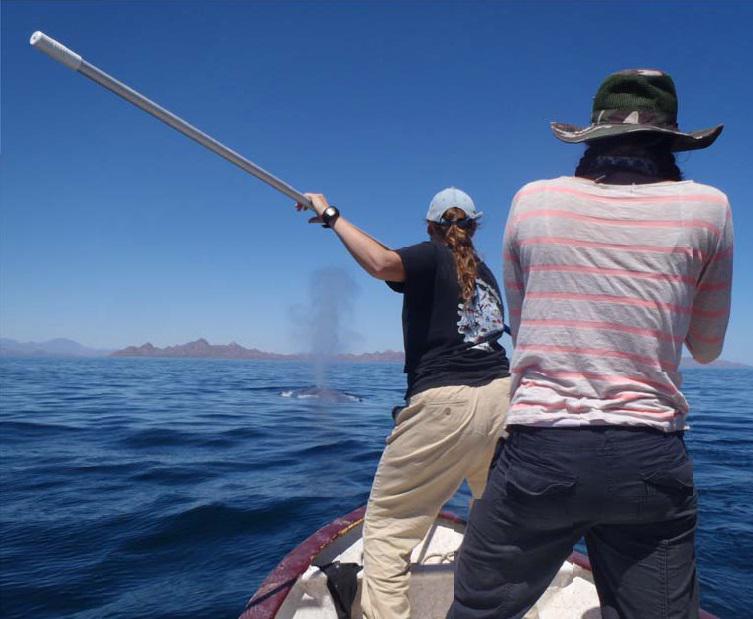Diane Gendron
Other projects
30 Mar 2017
Pilot Project for Monitoring Whale Watching Activities in the Loreto Bay National Park, Mexico
18 Sep 2018
Remote Monitoring of Whale Watching Activity and Blue Whale Diving Behaviour with an IP Camera-Based System in The Loreto Bay National Park, Mexico
25 Jun 2020
Accessible Remote Monitoring of Blue Whales and the New Passive Whale Watching Activity in the Loreto Bay National Park, Mexico
The aim of this project is to use the behavioural blue whale data collected during scientific research to promote responsible whale watching activities in a natural protected area.

During field work using the MK-10 Tag 1.
The Gulf of California is an important feeding and calving area for a portion of the Northeastern Pacific blue whales and represents the only monitored winter ground for this population. Nursing mothers prefer the coastal area and along with the other whales they attract tourists to the National Marine Park of Loreto Bay (NMPLB). Significant coastal developments proposed for the area will inevitably increase maritime traffic and whale watching activities (WW) that will likely modify the habitat and the blue whale’s behavior. Over twenty years, we have produced a unique blue whale sighting history database of 750 blue whales. The results obtained from this monitoring were crucial for designing Mexico’s Blue whale Program of Action for Species Conservation (PACE). The most urgent action proposed is to evaluate the impact of WW on these blue whales. Focal animal surveys initiated in 2009 proved successful to monitor their normal, or natural, surface behavior. However, we lack the underwater behavior that can only be investigated by using a time depth recorder (TDR)-tag.
Our goal is to combine our focal individual surveys with the tag technology to establish the normal surface and diving behavior of individual blue whales by sex, reproductive status and age class and evaluate their baseline activity budget in order to assess WW activities. To achieve this, the tag attached by a suction cup, will register for several hours the whale’s diving pattern while we will simultaneously follow the individual and monitor its surface behavior with no WW boat and before, during and after interactions with WW activities. A comparison of these data will help define the potential impact of these activities on the blue whales. To assess if our survey method cause behavioural changes, an independent land monitoring will also be conduct simultaneously. This study will improve and standardize the focal survey method and clarify activity budget (foraging, feeding at surface and depth, resting, nursing and socializing) to produce an evaluation of the relative importance of the different habitats in this marine protected area.
The ultimate goal is to share the results with the NMPLB authority and the users of this natural resource, to establish new regulations specific to the blue whales in this area in order to maintain this population healthy.